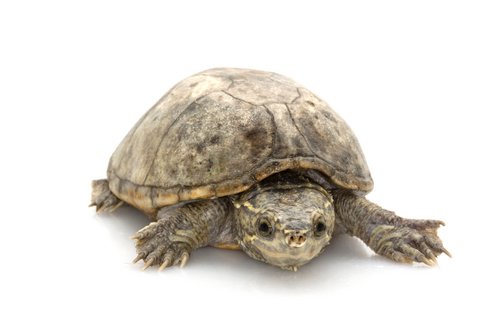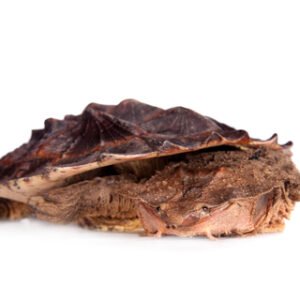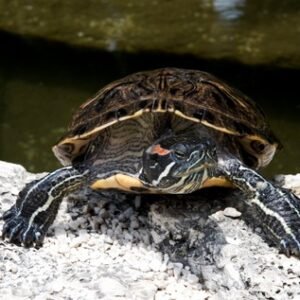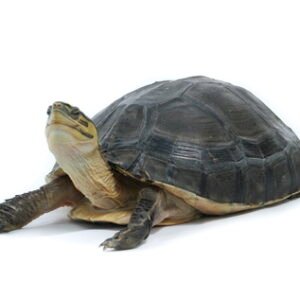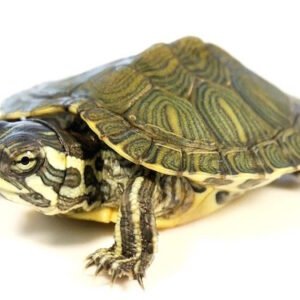Introduction to Musk Turtles
musk turtle , belonging to the family Kinosternidae, represent a unique group of aquatic turtles that have intrigued both researchers and enthusiasts alike. These small to medium-sized reptiles typically measure between three to five inches in shell length, with some species potentially reaching sizes beyond the average. Musk turtles are primarily found in freshwater environments such as rivers, lakes, and swamps, displaying a notable affinity for slow-moving or stagnant waters. Their habitats often provide ample coverage with wooden debris, aquatic vegetation, and muddy substrates, which they utilize for both shelter and foraging.
One of the most striking characteristics of musk turtles is their distinct physical appearance. They possess a high-domed shell that is often dark brown to black in color, complemented by a unique arrangement of scutes that can vary among species. Their skin is usually dark and can exhibit lighter markings. Musk turtles also have relatively small heads equipped with powerful jaws, which allow them to crush hard-shelled prey such as snails, crustaceans, and various types of decaying organic material.
A defining feature of musk turtles is their ability to produce a musky odor when threatened, which serves as a defense mechanism against potential predators. This characteristic has contributed to their name and serves as a reminder of the fascinating adaptations present in nature. Among the different species of musk turtles, such as the Common musk turtle (Sternotherus odoratus) and the Loggerhead musk turtle (Sternotherus minor), notable variations can be observed in size, coloration, and preferred habitat. Each species exhibits unique traits that showcase the incredible diversity within this family. Exploring the world of musk turtles reveals their importance within their ecosystems, as well as their intriguing biology, making them a captivating subject of study for herpetologists and nature enthusiasts.
Conservation and Habitat Preservation
Musk turtles, a distinct group of aquatic reptiles, are increasingly facing multiple threats that jeopardize their survival in natural habitats. Their conservation status is a growing concern due to various factors that include pollution, habitat destruction, and climate change. These turtles, which rely heavily on clean water sources, are particularly vulnerable to contamination from agricultural runoff, industrial waste, and urban development, all of which contribute to the degradation of their aquatic ecosystems.
The destruction of wetlands and river systems, often driven by human activities such as construction and land reclamation, further compounds the challenges musk turtles encounter. As these habitats diminish, the turtles lose vital nesting areas and breeding grounds, which are essential for population sustainability. Moreover, climate change poses an existential threat by altering weather patterns and temperatures, impacting the ecosystems on which these creatures depend. Rising water temperatures can disrupt reproductive cycles, while increased flooding may lead to the loss of critical nesting sites.
Preserving the natural habitats of musk turtles is not just crucial for their survival; it is important for maintaining biodiversity. Organizations focused on wildlife conservation play a pivotal role in initiating protective measures, such as habitat restoration projects, pollution mitigation strategies, and public awareness campaigns. Additionally, fostering community engagement is essential in these efforts. Individuals can contribute to conservation by practicing responsible pet ownership, ensuring pet turtles do not contribute to invasive species proliferation, and participating in local habitat clean-up activities. Small actions collectively create a significant impact in safeguarding musk turtle populations and their fragile habitats.

